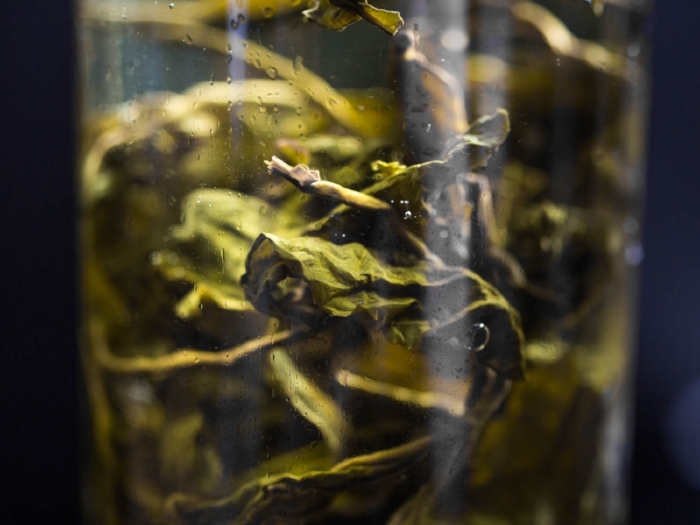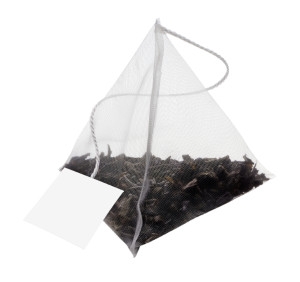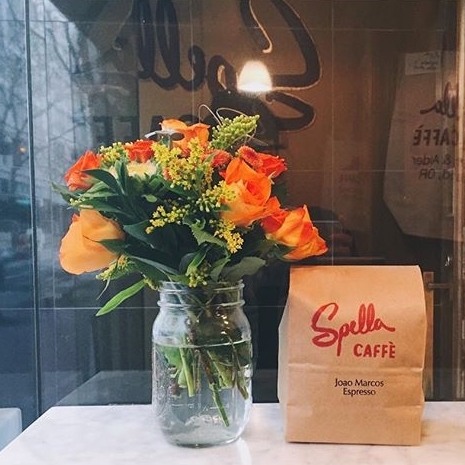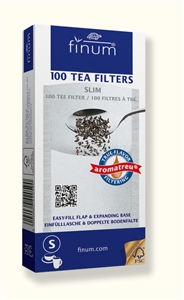Loose Leaf vs. Tea Bags: Why We Sell Loose Leaf
Jun 13th 2017

As avid tea drinkers know there are a myriad of ways to brew and enjoy tea; from bags, to infusers, to just letting the leaves sit in the water while you drink (we affectionately call this grandpa/grandma style). At The Pearl we have a variety of options to fulfill those needs, my personal favorite is a stainless steel infuser that rests on the rim of my cup and has ample space to allow the tea to fully infuse. We also have strainers, food grade silicone infusers, and self fillable paper tea bags. What you won’t see in the shop are pre-filled individual tea bags made out of “silk” (i.e. nylon) or PLA, polylactic acid, which is derived from corn starch.
But why don’t we sell these items? Good question.
THERE ARE TWO MAIN REASONS:
- Quality of the tea
- Environmental and safety concern
TEA QUALITY-
With tea quality you run into two issues- The size of the tea leaves and the caliber of the tea leaves.
Size: As in all things there are varying levels of quality when it comes to tea. You can have very high grade tea inside of tea bags but predominately the tea used is what is called fannings or dusts. These grades are the small bits and pieces left over after the higher grade whole leaves are sorted out. Traditionally this material was considered a reject or waste. But there are some redeemable qualities to it. Fannings are small enough to fit inside of tea bags. As they are already broken up there isn't the need to have a ton of extra space as the leaves won’t be expanding much beyond their original size. This broken quality exposes more surface area on the leaves which means that they will release flavor, polyphenols/tannins, and caffeine quicker than a whole leaf. Fannings can also get bitter much more quickly because of this.

Tea caliber: The tea that goes into big label tea bags is also usually not the highest quality or caliber. Often the tea is gathered from several plantations and blended together to create a specific flavor that then can be reproduced again and again so that a cup of tea will always taste the same as the next cup. Tea produced this way loses a lot of its special terroir qualities. These plantations are also generally in countries where there isn't a long history of tea growing and there isn't the excellence and expertise present that comes from centuries of tradition and production.
Exceptions and Alternative Ways to Brew: Some companies have combated the issues of size and quality by offering larger unbroken tea leaves in larger sized tea bags. This is a fairly good solution as it allows you get a fuller flavor and a better cup of tea. But personally, nothing will beat a loose leaf tea brewed without a confining tea bag. A large open infuser or even a just teapot or mug will provide plenty of room for your tea to expand and brew into the water. In the end it really comes down to your personal preference and taste. Check out this article for a great look into ways to brew without a tea bag: Serious Eats - Tea Essentials: The Only Teaware You Really Need.

source for above image
The other main reason we don’t use or sell non paper tea bags is one based on environmental and safety concerns.
ENVIRONMENTAL/SAFETY CONCERNS-
Is it really silk?: Tea bags that are labeled as mesh or silken are actually made from nylon, a fiber and plastic derived from petroleum. This is cause for consideration as many are concerned about placing plastic in very hot water and then drinking said water. Many types of plastic start to melt or become pliable when they are heated up and go past a certain temperature. For the two plastics most commonly used in tea bags; either food grade nylon or polyethylene terephthalate (PET), their melting point is above that of boiling water which is good. But there is another important temperature marker to keep in mind. That marker is the glass transition temperature. This marker is when a certain material's molecules start to break down. As a rule the glass transition temperature is always lower than the melting point. With food grade nylon and PET the glass transition temperature for both is below 212 degrees F, the point at which water boils. In this case there are most certainly things being leached from the tea bag into the hot water. Not a very appetizing situation.
But what biodegradable plant based plastics: There are tea bags out there that use polylactic acid (PLA) which is derived most often from corn. These are nicer options than petroleum based plastics as they are made from renewable resources and won’t leach even in boiling water. They are also compostable/biodegradable...sort of. To really break down and degrade these types of teabags need to be sent to an industrial/commercial composting facility. These commercial facilities are able to reach much higher temperatures than a backyard compost pile. This means that they are able to handle the PLA tea bags and fully compost them. So if you do have tea bags that use PLA please don’t try to compost them at home. There will hopefully be a commercial composting center in your area that you can utilize.

Paper tea bags: There is also the issue of paper tea bags. This is the one tea bag option that we offer at the Jasmine Pearl. These self fillable tea bags/filters are made by Finum. What is nice about them is that you can fill them yourself and them are convenient for travel. They are also unbleached, safe to use with boiling water, won’t impart flavor into your tea, and they are compostable. While paper tea bags are a much more health conscious option they can have some environmental issues as the manufacturing of paper can sometimes be damaging to the environment if not done in an ethical manner.
FINAL THOUGHTS
As one can see this topic is not one that is cut and dry. There are a lot of options out on the market and it really depends on personal preference for how one likes to brew their tea, the flavors they wish to enjoy, and the impact to their health and the environment. Here at the Jasmine Pearl we make an effort to offer as flavorful, environmentally and physically sound options as possible.
To help further your research and education I offer links and articles that dive further into these issues:
T Ching - Is your biodegradable tea bag really biodegradable? I think not
Tea Biz - Unraveling the Fibers of Silken Tea Bags
Mighty Leaf - Frequently Asked Questions
Steven Smith - Frequently Asked Questions
The Atlantic - Are Tea Bags Turning Us Into Plastic?
Serious Eats - Tea Essentials: The Only Teaware You Really Need (a great look into ways to brew tea with out a tea bag)
This article on tea bags and tea brewing options is the first in a series of longer posts that tackle questions we frequently get asked by customers of the Jasmine Pearl. Look for for the next in the series in about a month when we examine the world of natural flavorings and how they are different from artificial flavorings.

